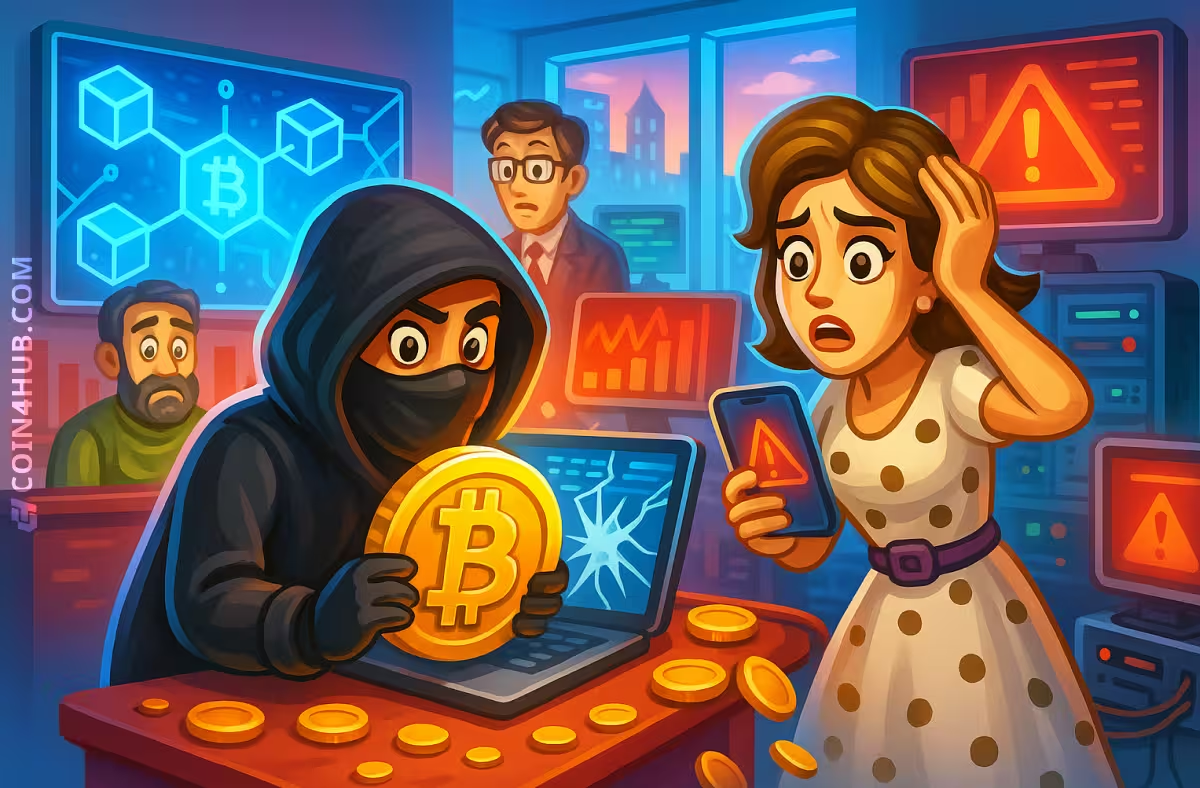Decentralized Protocol Security : The blockchain world got rocked this week when a team of white-hat hackers uncovered some seriously alarming security holes in several major decentralized protocols. These discoveries have sent shockwaves through the community and raised tough questions about security standards in an industry that’s moving at lightning speed.
This couldn’t have happened at a worse time, with DeFi and other blockchain applications seeing user numbers explode. The stakes? Higher than ever. If you’re wondering what these vulnerabilities mean for your crypto holdings or want to check out our main page for more blockchain security insights, I’ve got you covered in this breakdown.
Critical Vulnerabilities Uncovered
These security flaws weren’t spotted during a routine check—they came to light through a coordinated audit campaign targeting some of the most widely-used protocols out there. According to Immunefi’s latest security report, if bad actors had found these bugs first, we could have been looking at over $500 million in stolen digital assets. Let that sink in for a minute.
The hit list of affected protocols includes:
- Three major lending platforms
- Two decentralized exchanges
- Several cross-chain bridge protocols
What’s really unsettling is that many of these protocols had already gone through multiple security audits. Yet somehow, these vulnerabilities slipped through the cracks. Makes you wonder about the thoroughness of current security practices, doesn’t it?
Decentralized Protocol Security Common Security Issues in Protocols
Knowing what typically goes wrong in these systems might help us better protect ourselves. Let’s look at the security issues that keep haunting the ecosystem.
Smart Contract Vulnerabilities
Smart contracts are both the backbone and Achilles’ heel of decentralized protocols. Ever wondered why a bug in a smart contract can be so catastrophic? Unlike traditional software where you can quickly push an update, smart contracts on most blockchains are set in stone once deployed. That immutability—normally a feature—becomes a massive liability when something goes wrong.
The usual suspects in smart contract failures include:
- Reentrancy attacks: When an external contract makes recursive calls to drain funds before the first transaction finishes
- Integer overflow/underflow: Math operations going haywire because of how computers handle number limits
- Logic errors: Flawed reasoning that creates exploitable loopholes
- Access control mishaps: Sloppy permission settings that leave the door wide open
In this recent security sweep, a whopping 60% of discovered vulnerabilities fell into these categories. That’s a pretty glaring gap in development practices, if you ask me.
Oracle Manipulations
Oracles are the messengers between blockchains and the outside world, delivering crucial data like price feeds. They’re also prime targets for attacks.
The audit revealed three protocols vulnerable to oracle manipulation, where attackers could potentially:
- Game price feeds for quick profits
- Execute flash loan attacks to drain funds
- Exploit the lag time between oracle updates
Here’s the kicker—even protocols using multiple oracles as a safeguard weren’t immune. Some clever attacks targeted how these protocols combined data from different sources, proving that even redundancy isn’t foolproof.
Governance Vulnerabilities
Security isn’t just about code—it’s also about how decisions get made. Several affected protocols had governance weaknesses that could let attackers hijack the entire decision-making process.
These governance flaws typically look like:
- Too many tokens in too few hands
- Voting systems with exploitable loopholes
- Rush jobs with insufficient review periods
- No emergency brakes when things go south
One protocol had a particularly nasty vulnerability where someone with a relatively modest stake could leverage it into controlling governance decisions through a clever exploitation of voting mechanics.
Impact of Decentralized Protocol Security Flaws on Decentralized Protocols
These security revelations are sending ripples through the entire ecosystem. Let’s break down how different stakeholders are feeling the heat.
Financial Implications
When security breaches hit the news, wallets feel it first. Here’s what we’ve seen in the aftermath:
- Token prices for affected protocols dropped like stones—down an average of 18.3% within 24 hours of the announcement
- Users yanked over $1.2 billion in Total Value Locked (TVL) from these protocols
- DeFi insurance premiums shot up 25-30% across major providers
Recovery now hinges on how these teams respond. The protocols being transparent and taking swift action are already showing signs of bouncing back, while the ones with murky communication continue to bleed value.
User Trust and Protocol Adoption
More concerning than immediate price impact is the potential erosion of trust. After all, if these systems aren’t secure, what are they good for?
A post-announcement survey painted a telling picture:
| User Segment | Confidence Impact | Planned Usage Change |
|---|---|---|
| Retail Users | Severe Decrease (68%) | Planning to reduce exposure (72%) |
| Institutional Investors | Moderate Decrease (41%) | Pausing new investments (53%) |
| Developers | Slight Decrease (22%) | Increasing security focus (89%) |
Not great numbers for short-term adoption. But handled right, this crisis could actually become a turning point for better security practices across the board.
Regulatory Attention
Security incidents like these inevitably draw the regulatory spotlight. Since the announcement:
- The SEC has come knocking on the doors of five US-based affected protocols
- European Commission officials are citing these vulnerabilities in MiCA regulation discussions
- Singapore’s Monetary Authority has called for an industry roundtable on security standards
This heightened regulatory attention might fast-track formal security standards—bringing both headaches and potential long-term benefits to the space.
How to Secure Decentralized Protocols?
Given these discoveries, both builders and users should be taking steps to shore up security. Let’s look at what each group can do.
For Protocol Developers
If you’re building or maintaining a protocol, here’s your security checklist:
- Multiple Independent Audits: One audit isn’t enough—use different firms with different specialties to catch everything.
- Formal Verification: For the critical components, mathematically prove your code works as intended.
- Bug Bounty Programs: Pay the good guys to find bugs before the bad guys do.
- Time-Locked Upgrades: Build in delays for parameter changes so the community can review them.
- Gradual Rollouts: Don’t go from zero to billions overnight—start small and scale as confidence builds.
One approach gaining traction after this incident is “defense in depth”—implementing multiple security layers so that if one fails, others still stand. It’s not about having a perfect wall, but several walls.
For Protocol Users
As a user, you’re not just along for the ride. Here’s how to protect yourself:
- Diversify Across Protocols: Don’t put all your crypto in one basket, no matter how secure it claims to be.
- Consider DeFi Insurance: Options from Nexus Mutual, Unslashed, and others can provide some coverage.
- Check Security Credentials: Before jumping in, research audit history, bug bounties, and security track records.
- Test the Waters: Try new protocols with small amounts first before committing serious money.
- Use Hardware Wallets: Keep most assets in cold storage when not actively using them.
Even the best security can’t eliminate all risks—it’s about managing exposure and being ready when (not if) issues arise.
Industry Response to the Vulnerabilities
The community hasn’t wasted any time responding to these security bombs. Here’s how different players are reacting.
Affected Protocols
The named protocols have handled things very differently:
- Protocol A: Hit the emergency brakes immediately, assembled a crisis team with security researchers, and earmarked $10M for audit improvements.
- Protocol B: Pushed back on some findings while acknowledging others, then proposed governance votes on fixes.
- Protocol C: Went for a complete security overhaul, hiring a dedicated security team and implementing constant monitoring.
The most effective responses combined quick patches with deeper structural improvements to security frameworks.
Industry Collaborations
On the bright side, we’re seeing new industry teamwork around security:
- The DeFi Security Alliance has formed, bringing together 15 major protocols to share threat intelligence
- A new open-source vulnerability database specifically for common protocol security issues is being built
- Work has begun on standardized security scoring to help users gauge risk
These collaborative efforts show a maturing ecosystem that’s starting to treat security as a shared challenge rather than something each project handles in isolation.
Conclusion: Strengthening the Future of Decentralized Protocol Security
These security exposures are both a wake-up call and an opportunity. While they’ve revealed concerning gaps in current security practices, they’re also forcing the kind of hard conversations and improvements that could make the entire ecosystem stronger.
Moving forward, better decentralized protocol security will likely come from a mix of technical upgrades, industry standards, and user education. The protocols that’ll thrive won’t be the ones that view security as a box to check, but those treating it as an ongoing process requiring constant vigilance.
We all have skin in this game—whether as users, developers, or investors. Demanding and supporting better security isn’t just about protecting investments; it’s about ensuring these technologies deliver on their revolutionary promise.
What security measures do you take when using decentralized protocols? Has this news changed your approach to blockchain technologies? Drop a comment below and share your insights—we can all learn from each other’s experiences.
Keep an eye out for our upcoming series diving deeper into advanced security strategies for both builders and users in this wild west of decentralized finance.
Frequently Asked Questions about Decentralized Protocol Security
What are common security flaws in Decentralized Protocol Security?
Common issues include smart contract vulnerabilities like reentrancy attacks, oracle manipulations, and governance weaknesses that can expose protocols to various exploits.
How can users protect themselves when using Decentralized Protocol Security?
Users should diversify their holdings, use DeFi insurance, check security audits and credentials, test with small amounts, and use hardware wallets for added security.
What steps should developers take to secure Decentralized Protocol Security?
Decentralized Protocol Security: Developers need to conduct multiple independent audits, engage in formal verification, establish bug bounty programs, include time-locked upgrades, and implement phased rollouts to enhance protocol security.


This alarming revelation underscores the urgency for stringent security measures and continuous audits in decentralized protocols. Stakeholders must prioritize these to safeguard users’ assets effectively.
This detailed exposé underscores the urgent need for improved security measures within decentralized protocols. It’s startling yet crucial for future safeguarding strategies.
The recent exposure of vulnerabilities in major decentralized protocols underscores a critical need for the DeFi community to prioritize comprehensive security audits and adopt rigorous ongoing monitoring practices to safeguard user assets effectively.
The recent exposure of significant security vulnerabilities within several major decentralized protocols is a stark reminder of the importance of rigorous security measures in the DeFi space. It’s alarming that even previously audited protocols were affected, highlighting a crucial need for ongoing assessments and a multi-layered security approach. As a community, this should push us to prioritize and reinforce security standards to foster safer blockchain environments.
The recent discoveries of security flaws in major DeFi protocols highlight critical vulnerabilities that need urgent addressing. This incident should accelerate the adoption of more rigorous security measures across the industry.
The revelations about these security flaws are troubling yet provide a critical opportunity for tightening practices. It’s key for users and developers to collaborate on enhancing security measures.